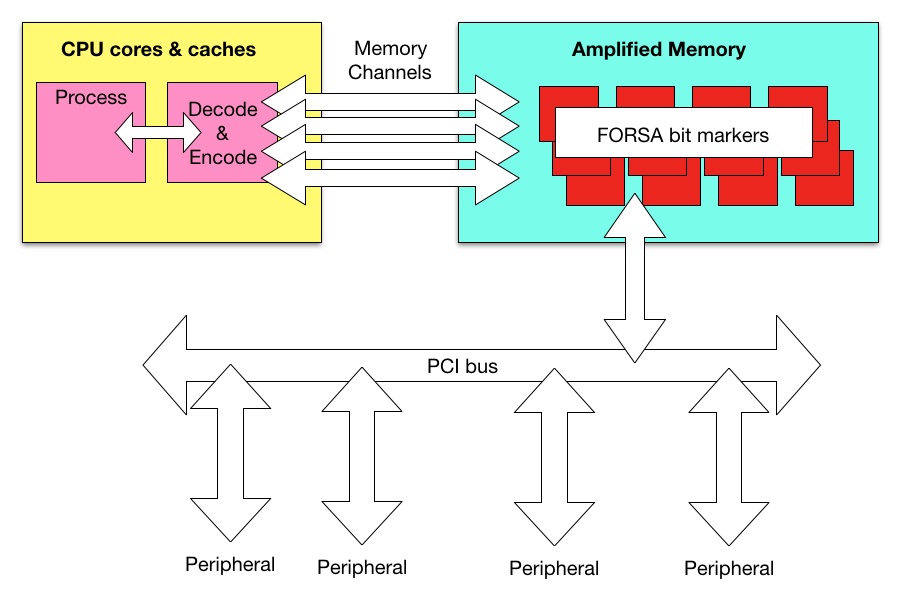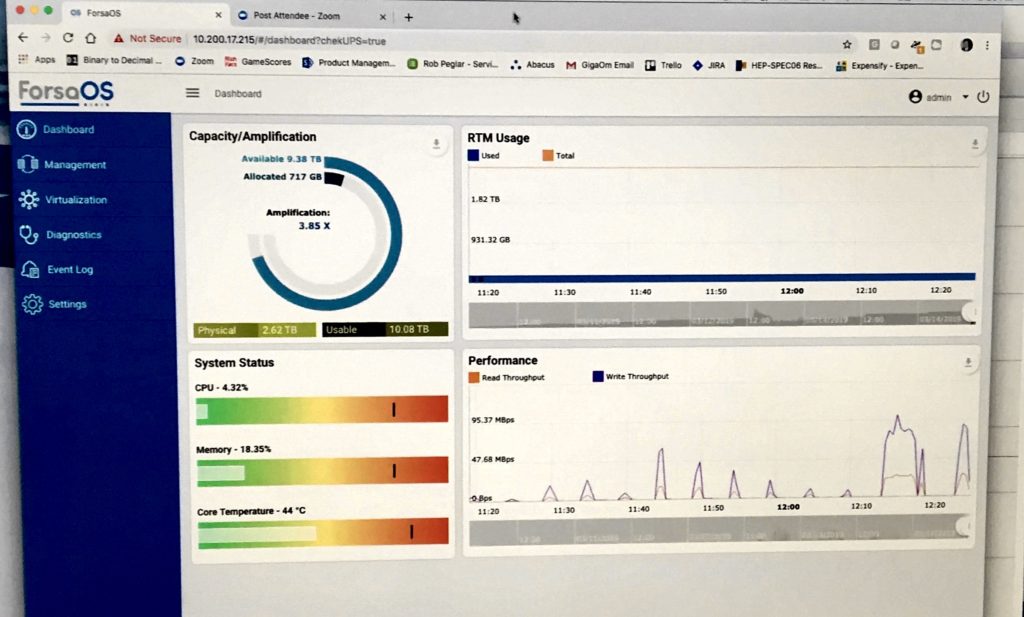Formulus Black has developed a way to make X86 servers run faster through a data reduction method that effectively enlarges server memory.
Its software runs in a bare metal server and can be run on bare metal server instances in public clouds such as Amazon and Azure.
Application code is mathematically processed to remove repetitive bit patterns. These are replaced with ‘Forsa’ bit markers (FbMs). ForsaOS is the name of the Formulus Black operating system and this is a new form of deduplication.
Processing involves patented algorithms that analyse data in real time. The FbMs represent lossless versions of the raw code and data and there is no need for compression or classic deduplication, as used in backup-to-disk target arrays. Nor is there any thin provisioning or page swapping.
The advantages are that applications are reduced in size and so memory is effectively amplified – up to 3.85 times in a demo system with amplification factors as high as 24x in some circumstances. Basically, your mileage may vary.
The FbMs are sent to the server CPU which decodes them into raw normal form – the usual application code form – processes the instructions and data, re-encodes them and sends them back to memory, ready to fetch the next FbM.

With FbMs the CPU has to do more work and this adds extra time to an application’s run-time. However, Formulus says overall execution time is reduced because the number of transfers across memory-CPU channels is reduced with its FbM instantiation of an application’s code.
Also, an FbM version of an application is reduced in size compared to its normal form and so more of them can fit in memory. As a result a ForsaOS server can run more VMs in a set amount of DRAM than an ordinary server running Linux or Windows.
There is a GUI, that works with any browser, and a RESTFul API set for all system functions. ForsaOS works with Haswell or later X86 servers and has been tested on Dell EMC, HPE and Supermicro servers. The minimum configuration is a 2-socket server with 384GB of DRAM.

Memory storage
Formulus aims to reduce IO to external storage drives and it backs up the server DRAM with a flash store and UPS. Memory contents are written to a flash drive if power is cut, intentionally or not.
DRAM contents are flushed to SSD periodically in a Blink process as well. This is a system-level process, a memory state capture, and not a VM-level one. ForsaOS retains at least one Blink and it cannot be deleted.
According to Rob Peglar, CTO of Formulus Black, this scheme turns server DRAM into a single giant non-volatile DIMM. This means an FbMed app can fit entirely in memory and never has to write to external storage, thus removing all storage IO time from its run-time.
Formulus will have access to true memory storage aka storage-class memory when Intel Cascade Lake CPU systems arrive with Optane storage, Peglar said.
Unchanged application code
Existing applications run unchanged in FbM form on a FORSA server.
ForsaOS uses the Linux kernel and has a built-in hypervisor, based on KVM, which presents the amplified memory to each guest OS as virtual storage, accessible at memory channel speeds.
Applications “think” they are doing IO to a storage volume but the transfer of information is to a virtual LUN in DRAM whose access has no storage IO penalty. Peglar said disk latency can be 7ms whereas DRAM latency is 100,000 times faster at 7ns.
These virtual LUNs are called LEMs – logical extensions of memory – and they are assigned to virtual machines.
Multiple virtual servers can share the same virtual storage space.
Peglar said a SQL Server VM runs well in a ForsaOS system with 8 cores and 12GB of memory. It can pump out 952,000 transactions per minute in a TPC-C style benchmark.This s a very small virtual system for SQL Server, according to Peglar.
Symbolic IO and bit markers
If the term ‘bit markers’ sounds familiar it is because it was used by Symbolic IO, a precursor company to Formulus Black, which went under in 2017, losing its founder and CEO.
The New Jersey company was re-organised and refunded with venture capital. It is led by Chairman and CEO Dr Carl Bettis and ex-Symbolic IO execs Steve Sicola and Rob Peglar are working at Formulus Black, as a Senior Fellow and CTO respectively. There are some 50 employees in total.
Blocks & Files thinks that Symbolic IO represented a kind of false dawn for bit-marker-style application servers. Here we have Formulus Black, a phoenix from the Symbolic IO ashes.
Will the bird fly? Give it a POC test and find out.








